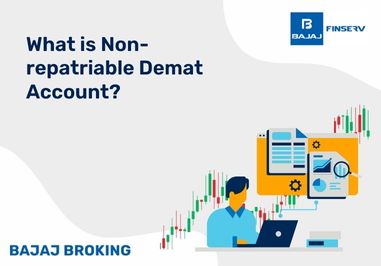Vertical spread options are a strategic trading approach used in the stock market basics to manage risk and optimise profits. A vertical spread involves buying and selling options of the same type—either calls or puts—with the same expiration date but different strike prices. This approach allows traders to limit potential losses while capitalising on market movements. Vertical spreads are commonly used in intraday trading and futures markets to control exposure. They require a margin trading facility (MTF), making them an essential tool for traders looking to manage risk while maintaining capital efficiency.
What Is a Vertical Spread?
A vertical spread is an options trading strategy that involves simultaneously buying and selling options of the same type with different strike prices but the same expiration date. These spreads are used to cap maximum risk while also limiting potential profit. Vertical spreads are often employed in risk management in trading, allowing traders to take advantage of market direction without excessive exposure. Traders use these spreads to create structured profit-loss scenarios, reducing uncertainty. Depending on market outlook, vertical spreads can be bullish or bearish, meaning they can benefit from price increases or declines. They are widely used in intraday trading and can be integrated into broader futures strategies. To execute a vertical spread, traders need to open a trading account, ensuring they have access to margin-based transactions and proper risk assessment.
How Do Vertical Spreads Work?
Buying and Selling Options
The trader purchases one options contract and sells another at a different strike price.
Same Expiration Date
Both options must expire on the same date, ensuring limited risk and defined profit potential.
Limited Profit and Loss
The maximum gain and loss are predetermined, making vertical spreads ideal for risk management in trading.
Lower Margin Requirement
Unlike naked futures, vertical spreads need a smaller margin, making them suitable for traders using MTF.
Profit from Market Direction
Bullish vertical spreads benefit from rising prices, while bearish spreads profit from falling prices.
Hedging Strategy
Many traders use vertical spreads to hedge against losses in an open trading account.
Exit Before Expiry
Traders can close the spread before expiry to lock in profits or cut losses.
Types of Vertical Spreads
Bulls
| Bears
|
Bull Call Spread
Involves buying a call option at a lower strike price and selling another call at a higher strike price.
Used when expecting a moderate rise in asset price.
| Bear Put Spread
Involves buying a put option at a higher strike price and selling another put at a lower strike price.
Used when expecting a moderate fall in asset price.
|
Bull Put Spread
Involves selling a put at a higher strike price and buying another put at a lower strike price.
Used when expecting limited upward movement.
| Bear Call Spread
Involves selling a call at a lower strike price and buying another call at a higher strike price.
Used when expecting limited downside.
|
Calculating Vertical Spread Profit and Loss
Criteria
| Key aspects
|
Maximum Profit
| - Achieved when the spread expires fully in-the-money (ITM) for the favourable direction.
- Calculated as the difference between the strike prices minus the net premium paid (for debit spreads) or plus the net premium received (for credit spreads).
|
Maximum Loss
| - Occurs when the spread expires out-of-the-money (OTM).
- For debit spreads: equal to the net premium paid.
- For credit spreads: equal to the difference between strike prices minus the premium received.
|
Break-even Point
| - For Bull Call Spread: lower strike price + net premium paid.
- For Bear Put Spread: higher strike price − net premium paid.
- For Credit Spreads: involves adjusting the short strike by the net premium.
|
Net Premium
| - Debit Spread: net outflow (you pay more for the long option than you receive for the short one).
- Credit Spread: net inflow (you receive more for the short option than you pay for the long one).
|
Risk-Reward Ratio
| - Determined by comparing potential profit to potential loss.
- Often more favourable in credit spreads if market conditions align.
|
Time Value Impact
| - Time decay (theta) often benefits credit spreads.
- Works against debit spreads if the move in the asset price does not happen quickly.
|
Volatility Sensitivity
| - Debit spreads benefit from rising implied volatility.
- Credit spreads benefit from falling implied volatility.
|
Key Considerations:
- The maximum profit and loss are capped, providing defined risk parameters.
- The break-even point indicates the underlying price at which the strategy neither profits nor loses.
- Expiration value of options directly influences the final profit or loss.
- Commissions and fees also affect the net profit or loss.
Real-World Example of a Bull Vertical Spread
A bull vertical spread strategy involves the simultaneous purchase and sale of call options with the same expiration date but different strike prices. The purchased call option has a lower strike price, while the sold call option has a higher strike price. This strategy is typically employed when an investor anticipates a moderate increase in the underlying asset's price. The defined risk and reward parameters are characteristics of this strategy.
Consider the following scenario:
- Underlying Asset: Stock XYZ
- Current Stock Price: ₹100
- Expiration Date: One month from now
An investor executes a bull call spread by taking these actions:
- Buys a call option: Strike Price ₹100, Premium ₹5
- Sells a call option: Strike Price ₹105, Premium ₹2
Calculations:
- Net Premium Paid: ₹5 (paid) - ₹2 (received) = ₹3
- Maximum Profit:
- (Higher Strike Price - Lower Strike Price) - Net Premium Paid = (₹105 - ₹100) - ₹3 = ₹5 - ₹3 = ₹2
- Maximum Loss:
- Break-even Point:
- Lower Strike Price + Net Premium Paid = ₹100 + ₹3 = ₹103
Outcomes at Expiration:
- If Stock XYZ closes at ₹106 (above the higher strike price):
- The ₹100 call option expires in the money with an intrinsic value of ₹6 (₹106 - ₹100).
- The ₹105 call option also expires in the money with an intrinsic value of ₹1 (₹106 - ₹105).
- Net profit: (₹6 - ₹1) - ₹3 = ₹5 - ₹3 = ₹2 (maximum profit achieved).
- If Stock XYZ closes at ₹102 (between the strikes):
- The ₹100 call option expires in the money with an intrinsic value of ₹2 (₹102 - ₹100).
- The ₹105 call option expires out of the money with no intrinsic value.
- Net profit/loss: ₹2 (from ₹100 call) - ₹3 (net premium paid) = -₹1 (a loss).
- If Stock XYZ closes at ₹99 (below the lower strike price):
- Both call options expire out of the money with no intrinsic value.
- Net loss: -₹3 (the net premium paid, representing the maximum loss).
Butterfly Spread
A butterfly spread is a neutral options strategy combining both bull and bear spreads. It uses three different strike prices for calls or puts, all with the same expiration date. The middle strike price is typically at or near the current underlying asset price, and the two outer strikes are equidistant from the middle strike. This strategy involves buying options at the two outer strikes and selling two options at the middle strike. The aim is to profit from limited price movement in the underlying asset, with the maximum profit occurring if the asset price is exactly at the middle strike at expiration. The maximum loss is limited to the net premium paid.
Short Call Butterfly Spread
A short call butterfly spread is a variation of the butterfly spread. This strategy is structured by selling a call option at a lower strike, buying two call options at a middle strike, and selling a call option at a higher strike. All options share the same expiration date. The strategy is typically employed when a trader anticipates significant price movement, either upward or downward, from the underlying asset. The maximum profit is achieved if the underlying asset moves significantly away from the middle strike. The maximum loss is limited to the difference between the lower and middle strike prices, less the net premium received.
Long Put Butterfly Spread
A long put butterfly spread involves buying one put option with a low strike, selling two put options with a middle strike, and buying one put option with a high strike. All options have the same expiration date. This strategy is generally used when a trader expects the underlying asset to remain relatively stable and close near the middle strike price at expiration. The maximum profit occurs if the underlying asset price is at the middle strike at expiration. The risk is limited to the net premium paid.
Short Put Butterfly Spread
A short put butterfly spread involves selling one put option with a low strike, buying two put options with a middle strike, and selling one put option with a high strike. All options share the same expiration date. This strategy is initiated when a trader anticipates a significant price move in the underlying asset.
Back Ratio
A back ratio spread is an options strategy where a trader buys more options than they sell. This strategy is typically employed when a trader anticipates a significant price movement in the underlying asset, but the direction of the movement is uncertain. For example, a common back ratio spread involves selling one at-the-money option and buying two out-of-the-money options, all with the same expiration date. The potential profit is theoretically unlimited on one side of the price movement, while the risk is limited on the other side. This strategy benefits from large price swings.
Iron Condor
An iron condor is a neutral options strategy that profits from an underlying asset remaining within a specific price range until expiration. It involves selling an out-of-the-money call spread and an out-of-the-money put spread simultaneously. Specifically, it consists of selling an out-of-the-money call, buying a further out-of-the-money call, selling an out-of-the-money put, and buying a further out-of-the-money put, all with the same expiration date. The maximum profit is the net credit received when initiating the strategy. The maximum loss is the difference between the strikes of either spread minus the net credit received.
Comparing Vertical Spreads to Other Options Strategies
Vertical spreads differ from other options strategies in their defined risk-reward structure. Unlike naked futures or intraday trading, vertical spreads cap both profit and loss. Compared to straddles or strangles, they have lower break-even points, making them a safer choice for stock market basics traders. Unlike iron condors or butterflies, vertical spreads involve only two positions, simplifying execution. Traders seeking directional exposure prefer vertical spreads, whereas iron condors and spreads cater to range-bound markets. Additionally, vertical spreads require a lower margin than writing naked options, making them accessible for MTF users.
Tax Implications of Vertical Spread Trading
Trading options using vertical spreads has specific tax implications. Profits from spreads are taxed as capital gains, with short-term gains taxed higher than long-term gains. Losses incurred from vertical spreads may be offset against other capital gains but require proper documentation. In some jurisdictions, frequent spread trading may be considered business income, subject to higher tax rates. The margin used in MTF trading does not influence tax directly but may impact financial reporting. For traders in intraday trading, understanding the tax treatment of spreads is crucial for effective risk management in trading. Consulting a tax professional helps ensure compliance with regulations.
Advantages & Disadvantages of Vertical Spread
Advantages
| Disadvantages
|
Defined risk and reward
| Limited profit potential
|
Lower margin requirement with MTF
| Requires market direction prediction
|
Works in bullish and bearish markets
| Can expire worthless
|
Ideal for intraday trading
| Limited to specific strike price ranges
|
Reduces exposure to market volatility
| Not suitable for extreme market movements
|
How to Construct Vertical Spreads
Select a Market Direction
Determine if you are bullish or bearish on a stock or index.
Choose an Expiry Date
Both options must expire on the same date.
Pick Strike Prices
Buy and sell options at different strikes to form a spread.
Calculate Potential Profit & Loss
Evaluate risk-reward before entering the trade.
Use Margin Trading Facility (MTF)
Ensure adequate margin availability.
Monitor Market Trends
Adjust or exit positions based on price movement.
Close Before Expiry (Optional)
Exit early to lock profits or cut losses.
Vertical Spreads in Options Trading
Vertical spreads are a fundamental options strategy used in the stock market basics to control risk while capturing potential gains. These spreads are essential for traders employing risk management in trading, allowing them to participate in directional market movements without excessive exposure. Whether trading futures, intraday trading, or longer-term positions, vertical spreads offer structured profit-loss potential. They require an open trading account and a sound understanding of MTF, making them suitable for both experienced and novice traders.
Conclusion
Vertical spreads are a powerful strategy in options trading, offering a controlled risk-reward profile. By understanding how to structure, calculate, and trade these spreads, traders can optimise their risk management in trading. With applications in futures, intraday trading, and MTF, vertical spreads remain a versatile tool in the stock market basics. While they limit both profit and loss, their strategic benefits make them an essential technique for disciplined traders looking for steady returns.
Disclaimer: Investments in the securities market are subject to market risk, read all related documents carefully before investing.
This content is for educational purposes only. Securities quoted are exemplary and not recommendatory.
For All Disclaimers Click Here: https://bit.ly/3Tcsfuc














